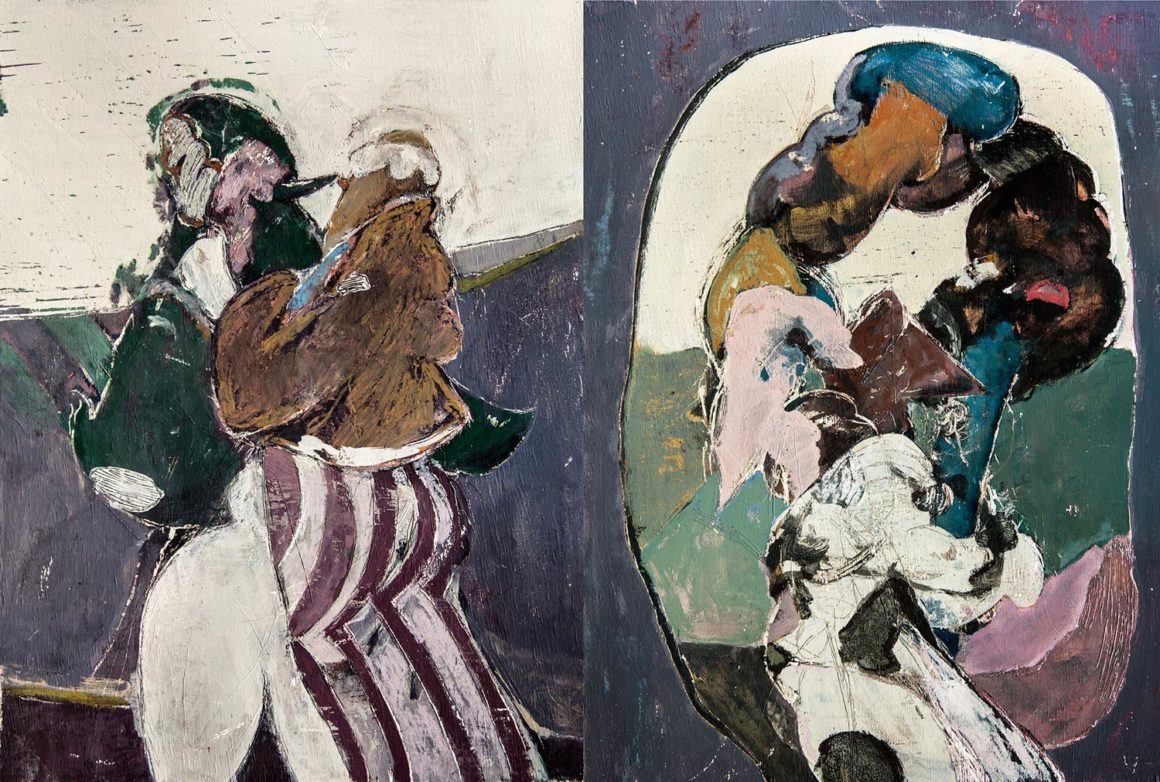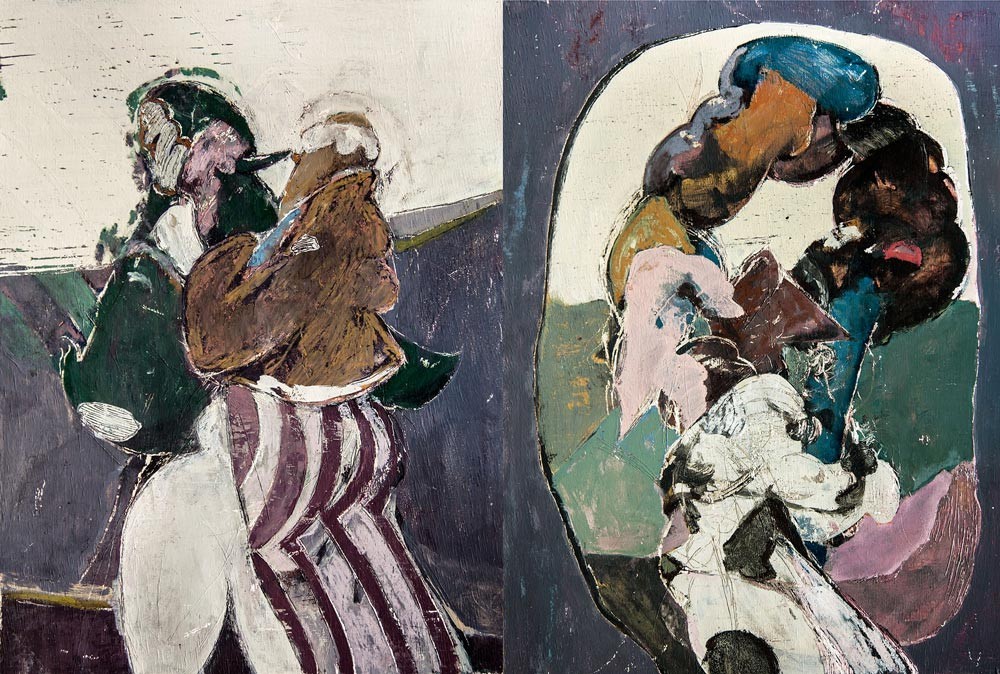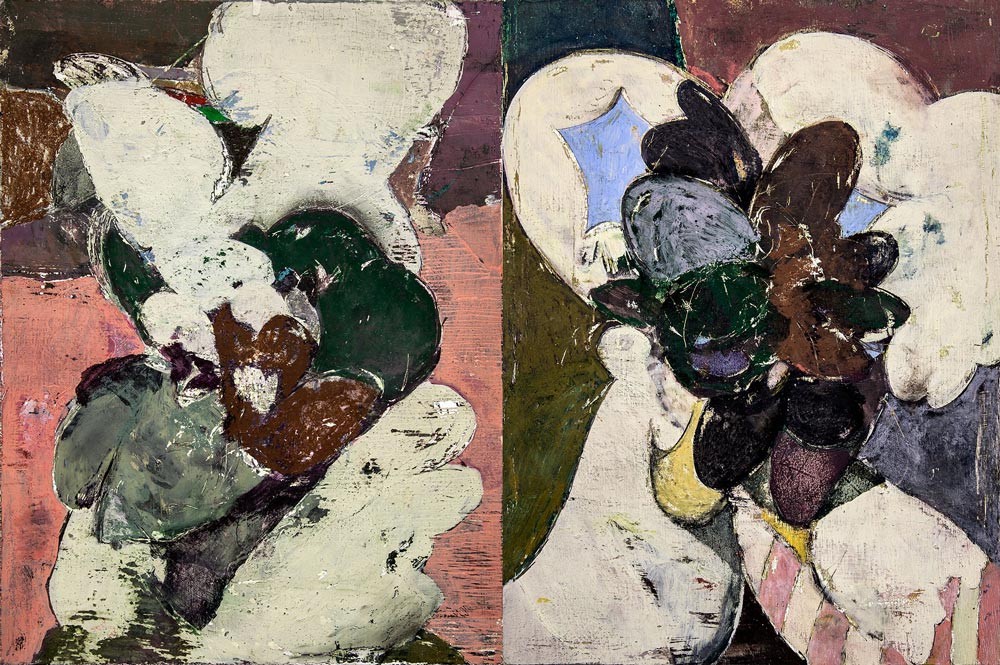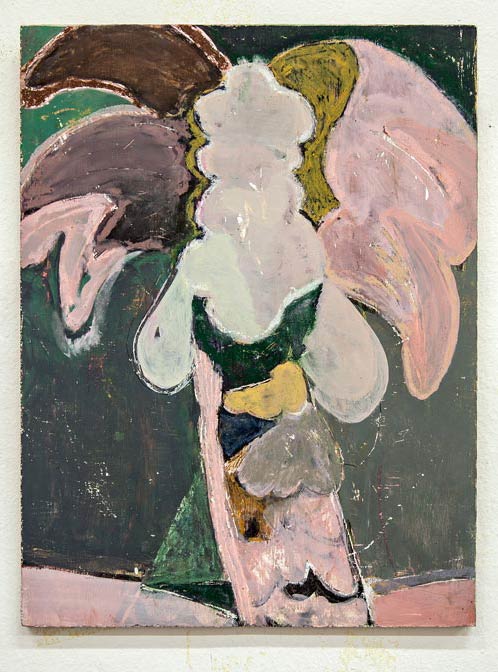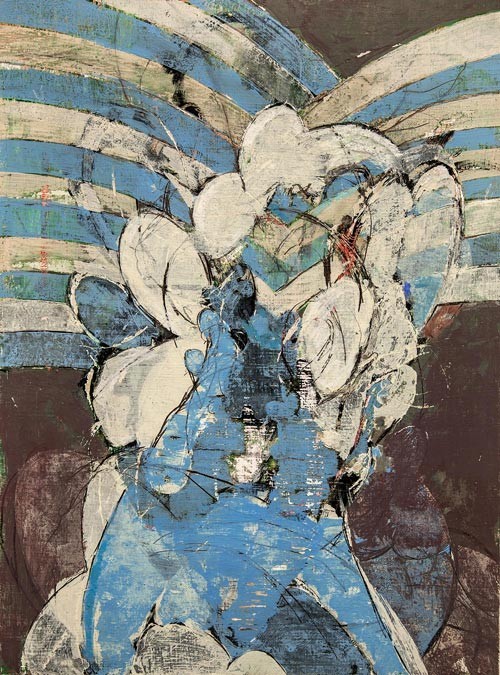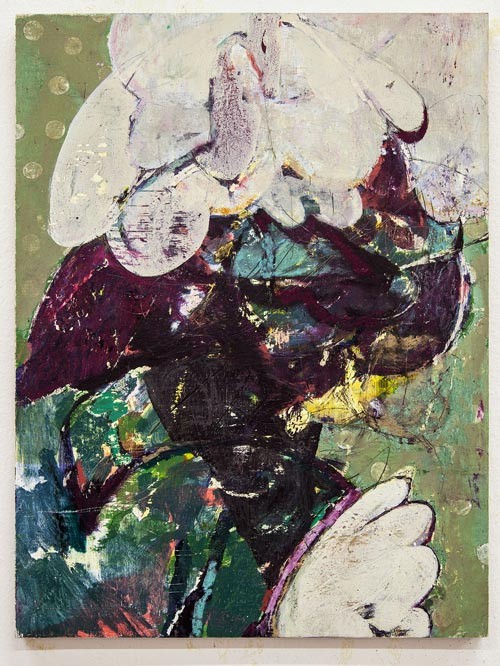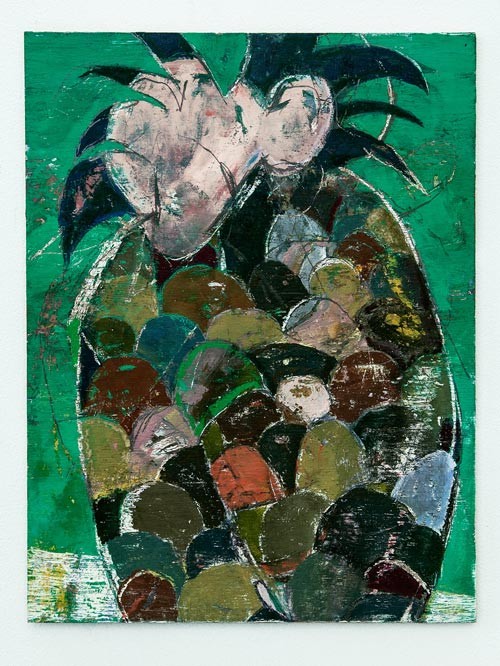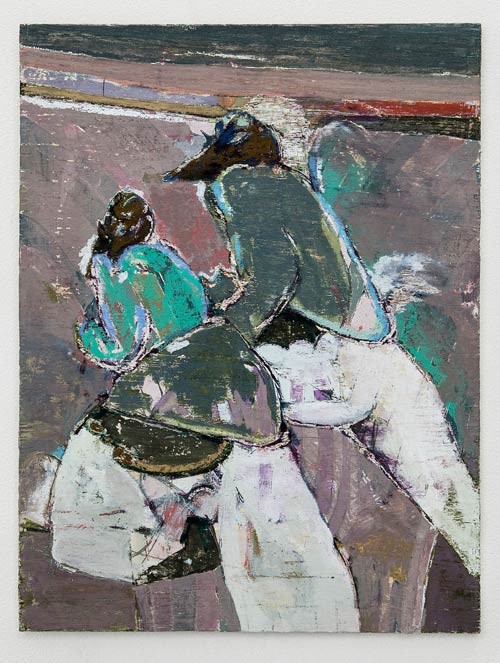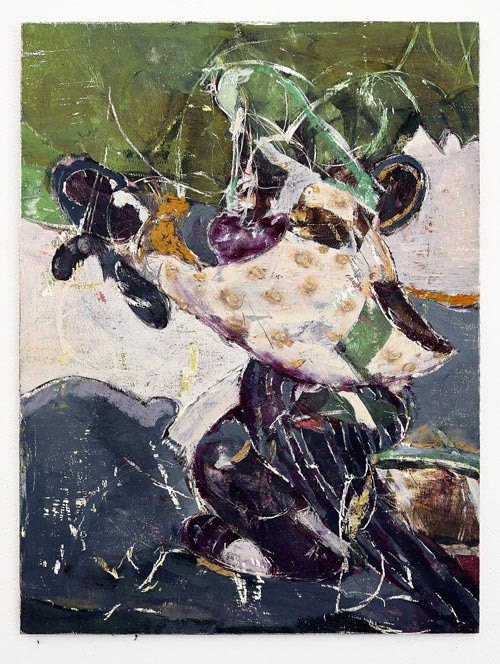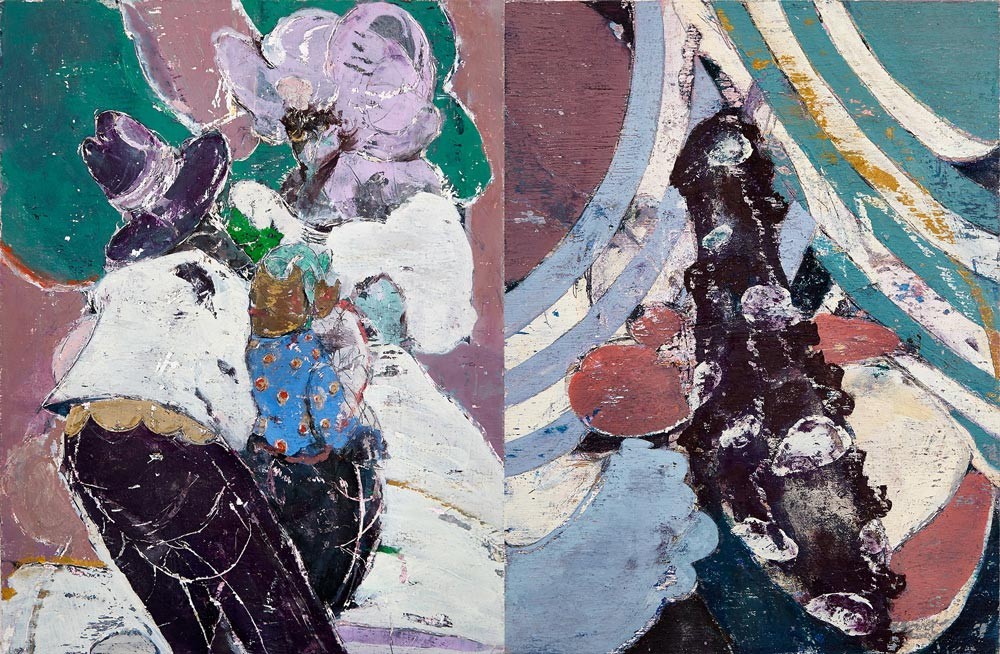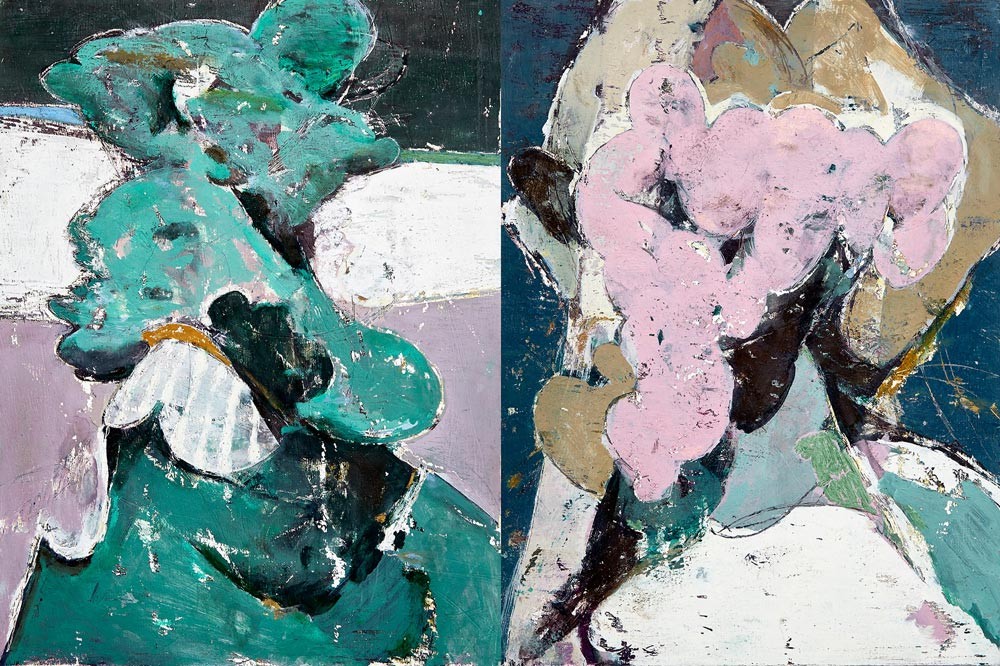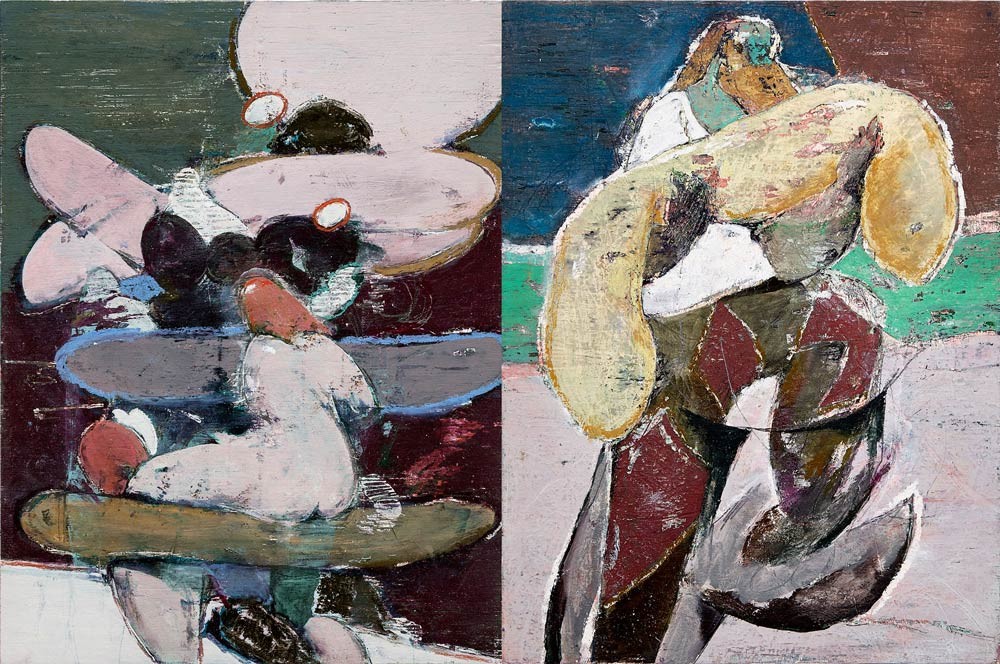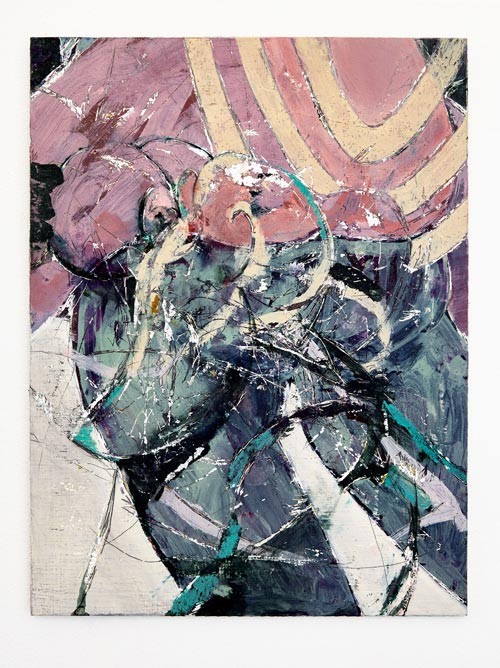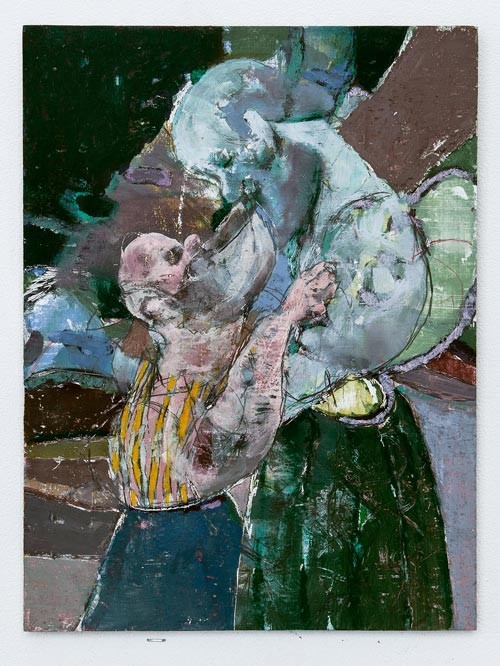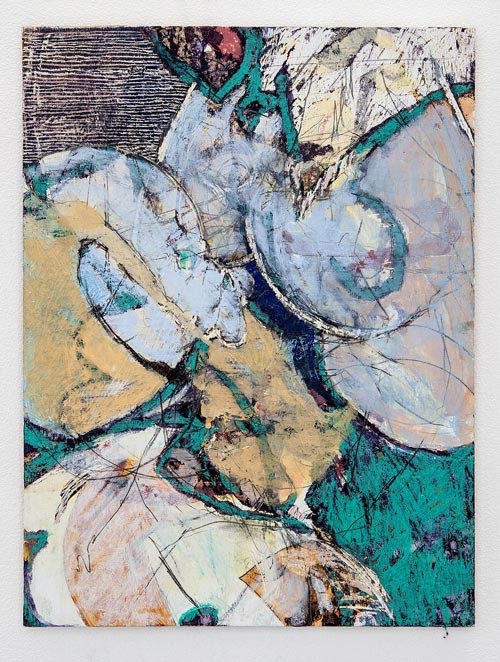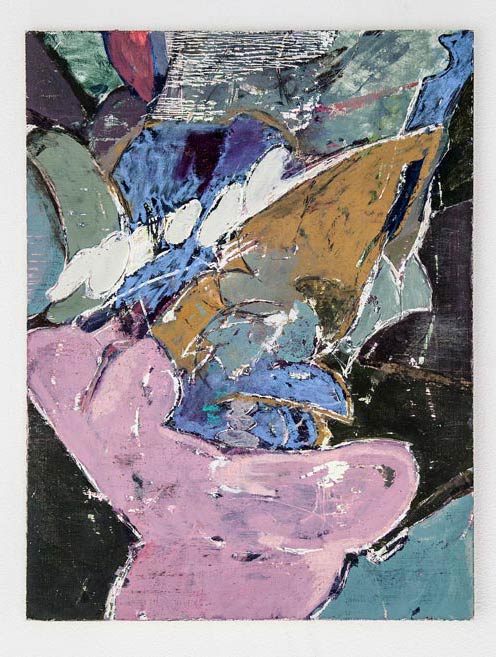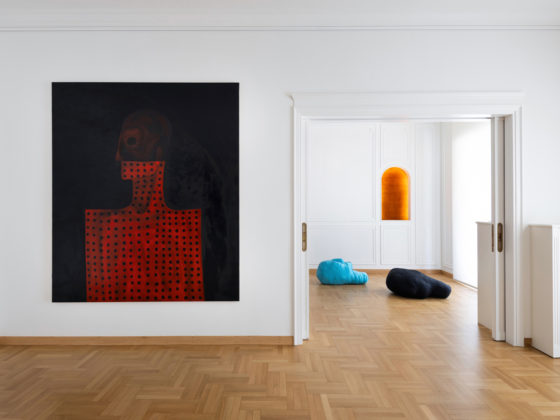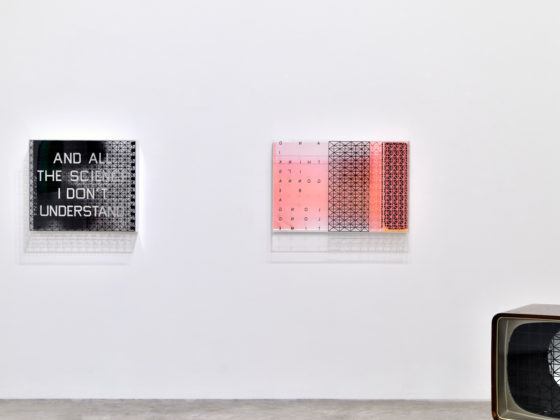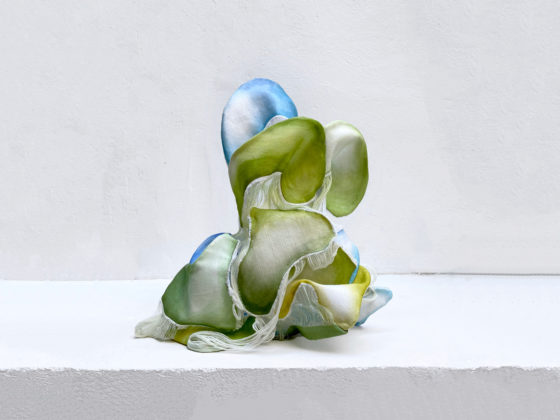…the uncanny is that species of the frightening that goes back to what was once well known and had long been familiar.1
Sigmund Freud, “The Uncanny”
Straddling the line between the known and the unknown, abstraction and representation, Alexandros Vasmoulakis presents deconstructed figures through a process of continuous transformations and a jumble of lines and colors. His paintings depict scattered beings that shift between attraction and repulsion as if they are playing a game of rope pulling, where winners and losers perform common roles. Inspired by the intertwined relationships of power and authority, but also from the effacement of bipolarity, the artist orchestrates a conjunction of opposites and leads the viewer to observe a world from which the infinite manifestations of visual language gush freely and effortlessly.
In an undefined space, Vasmoulakis enlarges the details of the abstract figures in order to enhance their morphological features and to transform them into independent points and lines that hover on a picture plane.2 However, at the same time he creates a distant point of view, so as to highlight the difference between the background and the displayed subject. The stages of the creative process and the expressive physical action are elucidated when we observe an amalgam of color layers that is created by the use of friction as well as by carving on the wooden surface. Wood, as the basic material for all the works, is converted into a painted relief that maintains its texture and ruggedness, while it sets vision and touch as the dominant receiving senses.
The images of Vasmoulakis depict the intentions of a modernist artist who decontextualizes any established form from its content, with the purpose to construct an integral unity. The artist as a contemporary and traditional painter embraces the qualities of the medium and explores the limits of visual perception, in order to detach the viewer from the constraints of a linear narrative. He impels the eye to slide away, so as to open a space for a different interpretation and to prevent identification. These abstract beings, as a living organism, incessantly move, evolve, alter, die, and are reborn again to continue their circle.
Alexandros Vasmoulakis neither selects naturalistic or symbolic interpretations, nor does he separate the familiar from the “uncanny” events. On the contrary, he merges the lines between the obvious and the hidden to embody one inside the other, recommending us in this way an undivided world.
Elli Paxinou – Art Historian
